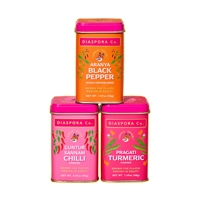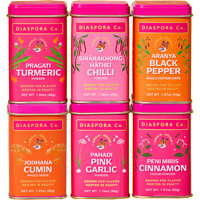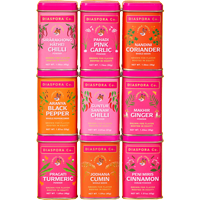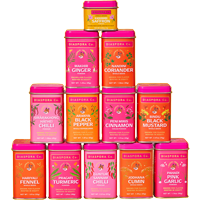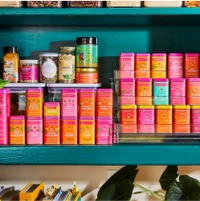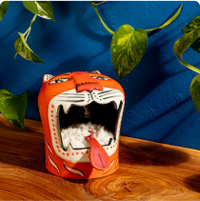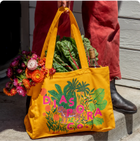The Global Context
For as long as can be remembered, fine chocolate has been associated with the masterful techniques of European chocolatiers. On the one hand, many chocolate connoisseurs are oblivious to the fact that cacao, the primary ingredient used to make chocolate, grows in the Global South. In fact, cacao can only be cultivated in regions that are within 10 – 20 degrees of either side of the equator. On the other hand, chocolate is often fetishised, especially in the United States, with a reductive focus on its exotic provenance.
Chocolate comes from a plant – the Theobroma cacao. Indigenous to the tropics of Mesoamerica, or modern day Central and South America, it was brought to Europe after the invasion and conquest of the Aztec empire by Spanish conquistadors. Thereafter, it travelled to the vast equatorial depths of Africa with European colonization and plantation slavery. This bitter, celebrated drink of the Aztecs, Olmecs and Incas slowly turned into an elite beverage. With the addition of other colonial plantation imports from the Global South, such as cane sugar and spices, it later transformed into sweetened confectionery in continental Europe. Cacao has since come full circle, from the New World to the equatorial climes of Asia and Africa as a global, democratized, consumer good.
In Chocolate: Riches from the Rainforest, Robert Burleigh writes that Spanish conquistador Hernán Cortés may have been the first European to encounter ‘xocoatl’— a warm, bitter drink made with cocoa beans — in the court of the Aztec ruler, Montezuma II, in 1519. Having noticed the reverence with which cacao was treated by the Aztecs, the Spanish started shipping these cacao seeds back home.
Much like Chinese tea at the time, cacao remained an imported indulgence of the European nobility, until production was shifted en masse from the New World to Africa and Asia in the late 1700s. The slow and labor-intensive processing of the cacao bean contributed to the rise of an emerging slave market between the early 17th and late 19th centuries, driven by the demand for manual labor. Although west Africa produces a bulk of the world’s cacao, cultivation there only began in the mid-1800s by erstwhile European colonists.
Meanwhile, in 1828, a Dutch chemist named Conrad van Houten patented ‘Dutching’, a method used to press cacao butter from roasted cacao beans. His groundbreaking discovery was that when leftover cacao mass was treated with alkaline salts, it led to the creation of cocoa powder. This, in turn, became the blueprint for all chocolate products of the future. The moldable chocolate that we now know and love was created in subsequent decades by adding melted cacao butter back into Dutch cocoa. By 1868, Cadbury was marketing boxes of chocolate candies in England. But in 1901, the company learned that its cacao beans, purchased from Portuguese plantations on the island of São Tomé off West Africa, were in fact produced by slave labor.
A century later, even though it is seemingly an open secret, there is still not enough acknowledgement of the fact that what passes for European chocolate is actually commodity sourced from Africa and South/Central America, which is only processed in Europe. Africa continues to be the highest producer of cacao in the world, with about 70 percent of the world’s cacao beans coming from four West African countries: Ivory Coast, Ghana, Nigeria and Cameroon. The Ivory Coast and Ghana are by far the two largest producers of cacao, accounting for more than 50 percent of the world’s cocoa. It is the aggregated produce from these plantations that is eventually supplied to every major craft European chocolate brand.
Driven by the demand for high yields and a continuous, low-cost supply of cacao to the world’s major chocolate manufacturers, exploitative labor practices are rampant. According to the 2018 Cocoa Barometer, a report by 15 European non-profit organizations, as many as 2.1 million child laborers are working in West Africa alone. Low cacao prices and lower labor costs drive farmers to employ children as a means to survive.
Despite having signed what is called the Cacao Protocol to reduce child labor by 70% in the Ivory Coast and Ghana, the chocolate industry has failed to meet the prescribed deadline time and again. All the major chocolate companies, as well as industry associations and cacao traders, have maintained that tracking or monitoring conditions within their own supply chains is impossible.
International attempts to improve conditions for children have failed because of persistent poverty, the absence of schools, increasing world cacao demand, more intensive farming of cacao, and the continued exploitation of child labor.
![]()
Cacao in India
Cacao has been extensively cultivated in South India since the 1960s and 70s. Tropical agricultural adviser and cacao consultant G.A.R Wood, in his book Cocoa Growing in India (1964), documented that the erstwhile states of Kerala, Madras and Mysore (as they were called under colonial rule) in South India were the most suitable for cacao cultivation. With rains from the South West and North East monsoons and a short dry season, some parts of the south, such as Nagercoil, Courtallam, Tenkasi, Palani Hills and Anamalai Hills (all in present-day Tamil Nadu) were selected for planting cacao.
Although the British first introduced cacao to India in 1798, by establishing eight plantations of the Criollo type of cacao in Courtallam, it was not until the British confectionery giant Cadbury broke ground in Wayanad, Kerala in the mid-1960s that cacao cultivation became a serious agricultural activity. But the Criollo variety from Central America was too vulnerable to thrive and was eventually replaced with the more robust and high yielding upper Amazonian Forastero variety that was brought in from West Africa and Malaysia.
With the help of the World Bank, the Kerala Agricultural University initiated cacao breeding programs in 1979. In 1987, they tied up with Cadbury and came up with highly productive hybrid seeds in an effort to maximize production. The creator of cult favorite products like Dairy Milk chocolate bars and the malted chocolate drink Bournvita, Cadbury (now renamed Mondelez) was virtually the only chocolate brand known throughout India in the ‘80s and ‘90s. Along with Nestle, it continues to dominate the chocolate market share in India. Together, it is these two corporations that buy a bulk of India’s cacao for their commercial chocolate production.
A market crash in the 1980s left cacao farmers in South India grappling with a drastic fall in demand for their beans and withdrawal of their buyers. As domestic prices fell dramatically to Rs. 6/kilo [approximately 0.082 $], the multi-state farmer co-operative CAMPCO came to the rescue, buying wet beans from cacao farmers to stabilize prices in the international market. The cacao crisis was thus expertly averted with CAMPCO’s intervention, as they adopted strategies to ensure permanent demand and a steady market for Indian cacao, and improving quality to meet international standards.
Despite cacao being cultivated for decades in India, it is only in the last two that a homegrown bean to bar movement has been taking steady shape in the country.
Attempting to move away from mass produced chocolate, artisanal chocolate makers focus primarily on perfecting the various stages of cultivation to arrive at desired flavor profiles, instead of relying on artificial flavoring and sweeteners.
Karthikeyan Palaniswamy, the co-founder of Soklet, a tree-to-bark chocolate maker in the Anamalai Hills of Tamil Nadu, broke down the events that led to the creation of their craft chocolate. He explained that during the harvest season, Mondelez and CAMPCO — the two big buyers of cacao beans in South India — announce pre-fixed prices at the beginning of the month and buy out all the beans in the region, without regard for their quality and processing. Since the heavily refined commercial chocolate made by these two giants does not require for the beans to be of superior quality, the farmer making the effort to cultivate quality beans is paid the same as the farmer who has inferior beans. In effect, having two large corporate buyers of cacao beans in South India has created an oligopolistic cacao trade, not conducive to incentivizing a high quality crop.
“The quality and flavor [of] your beans is what shows in the product. But quality doesn’t get rewarded in India. All superior and inferior produce gets the same price,” lamented Palaniswamy, highlighting that a farmer who puts in the effort to grow a good quality crop and use superior fermentation techniques is not compensated fairly for his effort. These circumstances led Soklet to tie up with Dandelion Chocolate makers in the United States in 2016, in an effort to bring their beans to world-class standards and create an international market for their produce. Within a year, Soklet had successfully elevated the quality of their harvest. So much so that their cacao beans won the 2017 edition of the International Cocoa Awards at the Salon du Chocolat in Paris.
“The only way to make your chocolate taste good is to have good, ethical cacao beans,” said Mansi Reddy, who handles marketing and partnerships at Mason & Co., an ethical, farmer-focused, bean to bar chocolate company in Auroville, near Puducherry. Reddy explained that commercial chocolate is expected to taste the same every single time. But with craft chocolate, when you’re using no dairy and little to no sugar, it is crucial for the cacao to be ethically produced, using regenerative farming practices, in order to ensure that the chocolate tastes great. Mason & Co. works closely with cacao farmers in South India, ensuring best practices, the perfect harvest timeline, and roasting and fermenting the beans to suit their quality requirements. Other bean to bar chocolate makers in the country such as All Things and Hillwild are also similarly seeking to build an equitable supply chain for the cacao trade in India, with an increased focus on fine tuning the various processes involved in cacao cultivation.
Reddy expressed surprise at the lack of initiative from chefs, bakers and the restaurant industry at large towards shifting to Indian, ethically sourced chocolate, considering the problematic supply chain and the troubled history of European chocolate. The founders of All Things Chocolate, who have been trying to get bakers and restaurants to switch over, also expressed similar views.
“To really change mass market ideas around chocolate is through baking chocolate, which is why our entire range is Indian. If you can convert a hundred bakeries to stop saying Belgian chocolate shake on their menus, that [would be] change at scale,” said Kuhu Kochar, a co-founder of All Things Chocolate.
She further explained that that can only happen through an equitable supply chain with the ability to scale up, and by decentralizing production, whereby everyone from farmers to chocolatiers can make enough money.
The prejudices and challenges faced by Indian artisanal chocolate makers can be ascribed to double standards and the pejorative perception of Indian-origin chocolate compared to long standing, reputable European brands.
Through the bean to bar movement, what’s become clear is that chocolate doesn’t only mean the cookie-cutter chocolate bar or baking chocolate that we know. Much like wine or specialty coffee, cacao is also reflective of its terroir. It is a natural ingredient that varies with harvest and region, depending on elements such as the soil, the rainfall that season, the time of harvest and the process by which the beans are fermented. While ethically sourced and cultivated craft chocolate may never realistically be able to free the industry from its deeply problematic practices, it can certainly pave the way towards a more sustainable approach. Besides, it could offer Indians a source of pride that is entirely homegrown.






